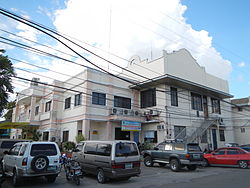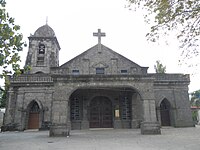
Pampanga, officially the Province of Pampanga, is a province in the Central Luzon region of the Philippines. Lying on the northern shore of Manila Bay, Pampanga is bordered by Tarlac to the north, Nueva Ecija to the northeast, Bulacan to the east, Manila Bay to the central-south, Bataan to the southwest and Zambales to the west. Its capital is the City of San Fernando. Angeles City is the largest LGU, but while geographically within Pampanga, it is classified as a first-class, highly urbanized city and has been governed independently of the province since it received its charter in 1964.

Central Luzon, designated as Region III, is an administrative region in the Philippines, primarily serving to organize the 7 provinces of the vast central plains of the island of Luzon, for administrative convenience. The region contains the largest plain in the country and produces most of the country's rice supply, earning itself the nickname "Rice Granary of the Philippines". Its provinces are: Aurora, Bataan, Bulacan, Nueva Ecija, Pampanga, Tarlac and Zambales. Pangasinan was formerly a province of Central Luzon before President Marcos signed Presidential Decree No. 1, 1972, incorporating it into Ilocos Region. Additionally, the province of Aurora was part of the defunct political region Southern Tagalog when the region was divided into Calabarzon and Mimaropa, upon the issuance of Executive Order No. 103, dated May 17, 2002, by then-President Gloria Macapagal Arroyo, which transferred Aurora to Central Luzon.

Lubao, officially the Municipality of Lubao, is a 1st class municipality in the province of Pampanga, Philippines. According to the 2020 census, it has a population of 173,502 people.

Mabalacat, officially Mabalacat City, is a 3rd class component city in the province of Pampanga, Philippines. According to the 2020 census, it has a population of 293,244 people.
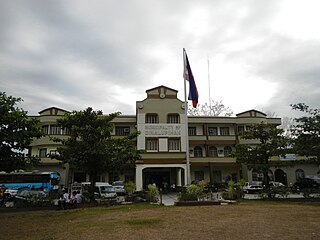
Dinalupihan, officially the Municipality of Dinalupihan, is a 1st class municipality in the province of Bataan, Philippines. According to the 2020 census, it has a population of 118,209 people.

Hermosa, officially the Municipality of Hermosa, is a 1st class municipality in the province of Bataan, Philippines. According to the 2020 census, it has a population of 77,443 people.

Orion, officially the Municipality of Orion, , is a 2nd class municipality in the province of Bataan, Philippines. According to the 2020 census, it has a population of 60,771 people.

Pilar, officially the Municipality of Pilar, is a 3rd class municipality in the province of Bataan, Philippines. According to the 2020 census, it has a population of 46,239 people.

Samal, officially the Municipality of Samal, is a 4th class municipality in the province of Bataan, Philippines. According to the 2020 census, it has a population of 38,302 people.

San Fernando, officially the City of San Fernando, is a 1st class component city and capital of the province of Pampanga, Philippines. According to the 2020 census, it has a population of 354,666 people.
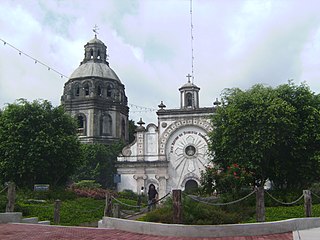
Bacolor, officially the Municipality of Bacolor, is a 3rd class municipality in the province of Pampanga, Philippines. According to the 2020 census, it has a population of 48,066 people.

Mexico, officially the Municipality of Mexico, is a 1st class municipality in the province of Pampanga, the Philippines. According to the 2020 census, it has a population of 173,403 people. It was also formerly known as Nuevo México during the Spanish period.

Minalin, officially the Municipality of Minalin, is a 4th class municipality in the province of Pampanga, Philippines. According to the 2020 census, it has a population of 48,380 people.

Porac, officially the Municipality of Porac, is a 1st class municipality in the province of Pampanga, Philippines. According to the 2020 census, it has a population of 140,751 people.

San Luis, officially the Municipality of San Luis, is a 3rd class municipality in the province of Pampanga, Philippines. According to the 2020 census, it had a population of 58,551 people.

Santa Ana, officially the Municipality of Santa Ana, is a 3rd class municipality in the province of Pampanga, Philippines. According to the 2020 census, it has a population of 61,537 people.
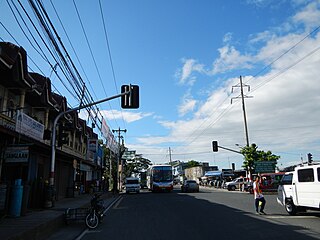
San Simon, officially the Municipality of San Simon, is a 3rd class municipality in the province of Pampanga, Philippines. According to the 2020 census, it has a population of 59,182 people.

Tarlac City, officially the City of Tarlac, is a 1st class component city and capital of the province of Tarlac, Philippines. According to the 2020 census, it has a population of 385,398 people.

Victoria, officially the Municipality of Victoria, is a 2nd class municipality in the province of Tarlac, Philippines. According to the 2020 census, it has a population of 69,370 people.
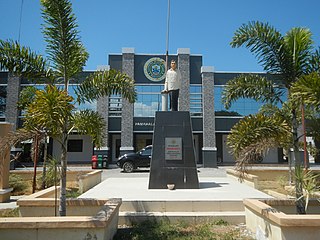
Llanera, officially the Municipality of Llanera, is a 4th class municipality in the province of Nueva Ecija, Philippines. According to the 2020 census, it has a population of 42,281 people.
